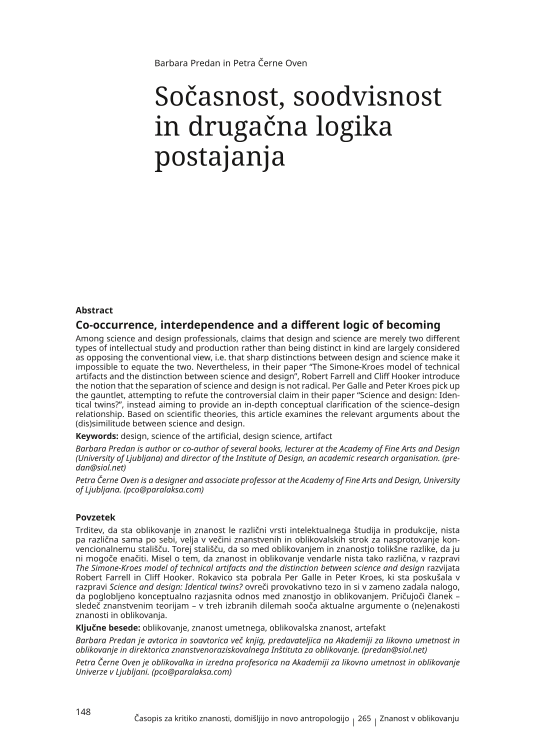Among science and design professionals, claims that design and science are merely two different types of intellectual study and production rather than being distinct in kind are largely considered as opposing the conventional view, i.e. that sharp distinctions between design and science make it impossible to equate the two. Nevertheless, in their paper “The Simone-Kroes model of technical artifacts and the distinction between science and design”, Robert Farrell and Cliff Hooker introduce the notion that the separation of science and design is not radical. Per Galle and Peter Kroes pick up the gauntlet, attempting to refute the controversial claim in their paper “Science and design: Identical twins?”, instead aiming to provide an in-depth conceptual clarification of the science–design relationship. Based on scientific theories, this article examines the relevant arguments about the (dis)similitude between science and design.




